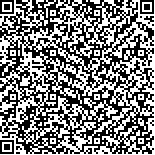| 本文已被:浏览 1130次 下载 1009次 |

码上扫一扫! |
| 静原鸡胸肌与腿肌肌苷酸特异性沉积相关基因的生物信息学分析 |
|
赵薇1,曹国伟2,王卫振1,邓占钊2,张娟1*,顾亚玲1,虎红红1,黄增文3
|
|
|
| (1.宁夏大学 农学院, 银川 750021;2.彭阳县畜牧技术推广服务中心, 宁夏 固原 756000;3.西昌学院 动物科学学院, 四川 西昌 615000) |
|
| 摘要: |
| 旨在筛选影响静原鸡胸肌与腿肌中肌苷酸(Inosine monphosphate,IMP)特异性沉积相关关键差异蛋白。基于课题组前期利用高效液相色谱法测定IMP和肌苷含量,并且采用液相色谱-质谱(LC-MS/MS)技术对选取的具有相同遗传背景180日龄静原鸡胸肌和腿肌进行蛋白质组测序,本研究运用实时荧光定量PCR(RT-qPCR)技术对相关基因进行表达量分析,并利用蛋白质组测序数据筛选出IMP合成相关关键差异表达蛋白,对其进行生物信息学分析,以及差异表达蛋白对应基因与IMP相关性分析。结果表明: 1)差异蛋白对应基因表达量与蛋白质组测序数据结果一致。2)通过KEGG通路富集分析发现,嘌呤代谢通路中筛选出差异表达蛋白PKM2和PGM1。3)同时对差异表达蛋白PKM2和PGM1参与的GO功能富集分析显示,PKM2主要参与ADP产生ATP、嘌呤核苷代谢和糖酵解等生物学过程,细胞内的细胞器和细胞质等细胞组分,镁离子结合、丙酮酸激酶活性和磷酸转移酶活性等分子功能;PGM1参与碳水化合物代谢和有机物代谢等生物学过程,其分子功能涉及镁离子结合和异构酶活性等。4)蛋白网络互作分析进一步发现,PKM2与ENO4、GAPDH等11个蛋白相互作用,PGM1与PGM2、TKT等10个蛋白相互作用。5)PKM2和PGM1与静原鸡胸肌和腿肌IMP的相关性分析显示,胸肌PKM2 mRNA表达量与IMP含量呈负相关性(r=-0.171 0),但腿肌PKM2 mRNA表达量与IMP含量呈极显著正相关(r=0.735 0)(P<0.01);胸肌和腿肌PGM1 mRNA表达量与IMP含量均呈极显著负相关(r=-0.536 2和-0.512 5)(P<0.01)。本研究为提高静原鸡肉风味,促进地方品种资源的开发利用提供科学依据。 |
| 关键词: 静原鸡 胸肌 腿肌 肌苷酸 蛋白质组学 |
| DOI:10.11841/j.issn.1007-4333.2022.05.21 |
| 投稿时间:2021-07-08 |
| 基金项目:宁夏自然科学基金项目(2021AAC03001) |
|
| Bioinformatics analysis of genes related to inosine monophosphate specific deposition in chest muscle and leg muscle of Jingyuan chicken |
|
ZHAO Wei1,CAO Guowei2,WANG Weizhen1,DENG Zhanzhao2,ZHANG Juan1*,GU Yaling1,HU Honghong1,HUANG ZengWen3
|
| (1.College of Agriculture, Ningxia University, Yinchuan 750021, China;2.Pengyang County Livestock Technology Extension Service Center, Guyuan 756000, China;3.School of Animal Science, Xichang College, Xichang 615000, China) |
| Abstract: |
| The aim of this study was to screen the key differential proteins affecting the specific deposition of inosine monphosphate(IMP)in chest muscle and leg muscle of Jingyuan chicken. In the previous stage, the contents of IMP and inosine were determined by high performance liquid chromatography, and the proteome sequences of chest and leg muscles of 180-day-old Jingyuan chickens with the same genetic background were sequenced by liquid chromatography-mass spectrometry(LC-MS/MS). In this study, real-time fluorescence quantitative PCR(RT-qPCR)was used to analyze the expression of related genes, and the differentially expressed proteins related to IMP synthesis were screened by proteome sequencing data. Bioinformatics analysis and correlation analysis between differentially expressed proteins and IMP were conducted. The results showed that: 1)The corresponding gene expression of the differential protein was consistent with the proteome sequencing data. 2)Through KEGG pathway enrichment analysis, it was found that differentially expressed proteins PKM2 and PGM1 were identified from purine metabolism pathway. 3)At the same time, GO functional enrichment analysis of differentially expressed proteins PKM2 and PGM1 showed that PKM2 was mainly involved in biological processes such as ATP production, purine nucleoside metabolism and glycolysis of ADP, cellular components such as organelles and cytoplasm, and molecular functions such as magnesium ion binding, pyruvate kinase activity and phosphotransferase activity; PGM1 participates in biological processes such as carbohydrate metabolism and organic metabolism, and its molecular function involves magnesium ion binding and isomerase activity. 4)Protein network interaction analysis further discovered that PKM2 interacted with 11 proteins such as ENO4 and GAPDH, and PGM1 interacted with 10 proteins such as PGM2 and TKT. 5)The correlation analysis between PKM2, PGM1 and IMP in chest muscle and leg muscle of Jingyuan chicken showed that there was a negative correlation between PKM2 mRNA expression and IMP content in breast muscle of Jingyuan chicken(r=0. 171 0). However, there was a very significant positive correlation between PKM2 mRNA expression and IMP content in leg muscle (r=0. 735 0)(P<0. 01); The expression of PGM1 mRNA expression in chest muscle and leg muscle was negatively correlated with IMP content(r=0. 536 2, -0. 512 5)(P<0. 01). These results provide a scientific basis for improving the flavor of Jingyuan chicken and promoting the development and utilization of local breed resources. |
| Key words: Jingyuan chichen chest muscle leg muscle inosine monphosphate proteomics |